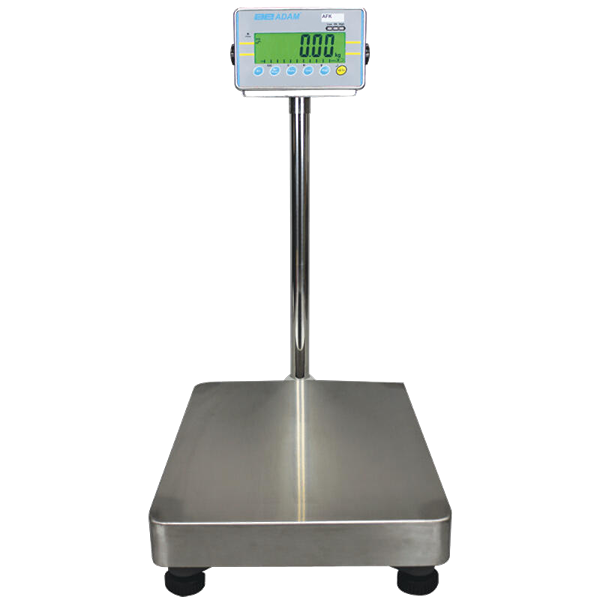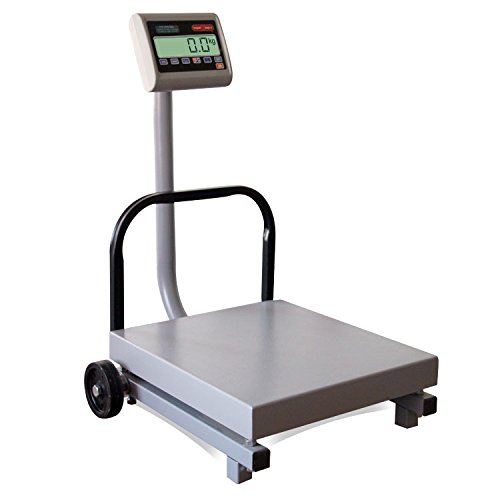Understanding the Different Types of Industrial Scales for Your Business
Understanding the Different Types of Industrial Scales for Your Business
Blog Article
Exactly How Industrial Scales Job: A Thorough Review for New Users
Understanding the mechanics behind industrial scales is essential for new individuals that desire to make certain precision in their dimensions. These gadgets rely upon tons cells and strain gauge technology to transform weight into a measurable layout, yet the subtleties of their procedure prolong beyond plain capability. From the different types offered to the crucial strategies for appropriate usage and maintenance, each facet plays a substantial function in accomplishing reputable results. As we check out these elements, one must take into consideration just how these aspects communicate to enhance efficiency in diverse commercial applications.
Essentials of Industrial Scales
Industrial scales are vital tools used across different sectors, consisting of manufacturing, logistics, and farming, to ensure exact weight measurements of hefty loads. The basic principle behind commercial scales includes the conversion of weight right into a measurable kind that can be displayed electronically or analogically. These scales use various systems, such as load cells or mechanical levers, to determine the weight of items positioned upon them.

In enhancement to their dimension abilities, industrial scales are designed to withstand harsh settings, including robust building that resists dirt, wetness, and heavy impacts. Calibration and upkeep are crucial to make sure precision, as also small inconsistencies can result in significant economic effects. By comprehending the basics of commercial ranges, users can value their value in different commercial applications.
Kinds Of Industrial Scales
Various kinds of commercial ranges deal with the diverse requirements of different sectors, each created to handle details evaluating tasks with accuracy and reliability. Amongst one of the most usual types are flooring ranges, which are excellent for evaluating cumbersome and heavy things. These scales commonly include big systems and can suit palletized products, making them important in warehouses and shipping centers.
Another type is bench ranges, which are often utilized for smaller sized things in manufacturing and retail settings. They supply exact measurements for items that call for precision, such as chemicals or parts in setting up lines (Industrial Scales). For mobile procedures, mobile scales provide versatility and convenience of transport, suitable for fieldwork or momentary installments
In applications requiring high-capacity measurements, such as wholesale product handling, crane ranges and lots cells are used. These ranges can measure lots suspended from a crane or other lifting apparatus, guaranteeing security and precision throughout procedures. In addition, specialized ranges like checkweighers are made use of in manufacturing lines to keep top quality control by ensuring that products meet weight specifications. Each sort of commercial scale plays a crucial function in improving operational effectiveness and accuracy across various sectors.
Just How Evaluating Systems Work
Considering systems are vital elements that enable exact measurement of mass across various commercial scales. These mechanisms utilize numerous principles of physics and design to give exact weight readings, important for supply administration, high quality control, and conformity with governing requirements.
One common kind of weighing system is the load cell, which operates the principle of pressure determines. When a tons is used, the tons cell flaws somewhat, creating an electrical signal symmetrical to the weight. This signal is then exchanged a legible weight measurement by the scale's electronics.
Another commonly used system is the mechanical equilibrium, which employs a system of bars and weights. Industrial Scales. This technique depends on the principle of stability, where the weight of the object being measured is stabilized against understood weights, enabling direct dimension
Additionally, hydraulic and pneumatically-driven scales take advantage of liquid dynamics concepts to measure weight. These systems utilize the stress exerted by a tons to establish weight, providing high precision for massive tons.
Appropriate Use Techniques
When using commercial ranges, sticking to proper usage methods is crucial for making certain accurate measurements and preserving equipment integrity. It is essential to select the suitable scale for your particular application, as scales vary in capability and precision.
Before evaluating, guarantee that the scale is positioned on a steady, level surface without vibrations or disturbances. This will aid to decrease mistakes created by exterior variables. In addition, adjust the scale according to the producer's specs prior to use, ensuring that it is functioning appropriately.
When positioning items on the range, disperse the weight uniformly to prevent tipping or damaging the equipment. Constantly enable the scale to stabilize prior to videotaping the weight, as variations helpful hints might happen during first positioning. For bulk materials, use containers that are ideal for the range size to avoid overloading.
Furthermore, stay clear of putting excessively hot or cool products directly on the range, as temperature variants can impact accuracy. Last but not least, maintain the evaluating platform free and tidy of debris to stop contamination and make sure trustworthy results. By following these methods, customers can make best use of the performance and longevity of their commercial ranges.
Maintenance and Calibration Tips
Guaranteeing the longevity and precision of industrial scales needs thorough maintenance and normal more tips here calibration. A precautionary upkeep routine is important; it should include regular evaluations to determine damage, particularly on lots cells and various other sensitive parts. Routinely cleaning the scale's surface and guaranteeing the bordering area is without debris will certainly help preserve its honesty and efficiency.
Calibration is similarly vital and should be carried out at normal periods or whenever the scale experiences significant adjustments in temperature, moisture, or physical displacement. Make use of licensed calibration weights that are traceable to national standards for accuracy. Paper each calibration session diligently to track efficiency gradually and recognize any kind of patterns or recurring issues.
Furthermore, be conscious of the range's environment. Prevent putting it near sources of vibration, electro-magnetic disturbance, or extreme temperatures, as these elements can detrimentally affect dimensions. Lastly, train all operators on proper range usage and maintenance procedures to ensure constant efficiency and precision. By sticking to these upkeep and calibration pointers, individuals can boost the reliability of their industrial ranges, making sure optimum procedure in any kind of setup.
Conclusion

Comprehending the mechanics behind commercial ranges is critical for new individuals who want to make sure accuracy in their dimensions.Industrial scales are vital tools made use of throughout various sectors, consisting of manufacturing, logistics, and agriculture, to guarantee accurate weight measurements of heavy lots. The basic principle behind industrial scales includes the conversion of weight right into a quantifiable type that can be displayed digitally or analogically. By understanding the fundamentals of industrial ranges, individuals can appreciate their value in various industrial applications.
In verdict, understanding the operation and upkeep of industrial ranges is critical for making certain accurate weight dimensions in numerous applications. (Industrial Scales)
Report this page